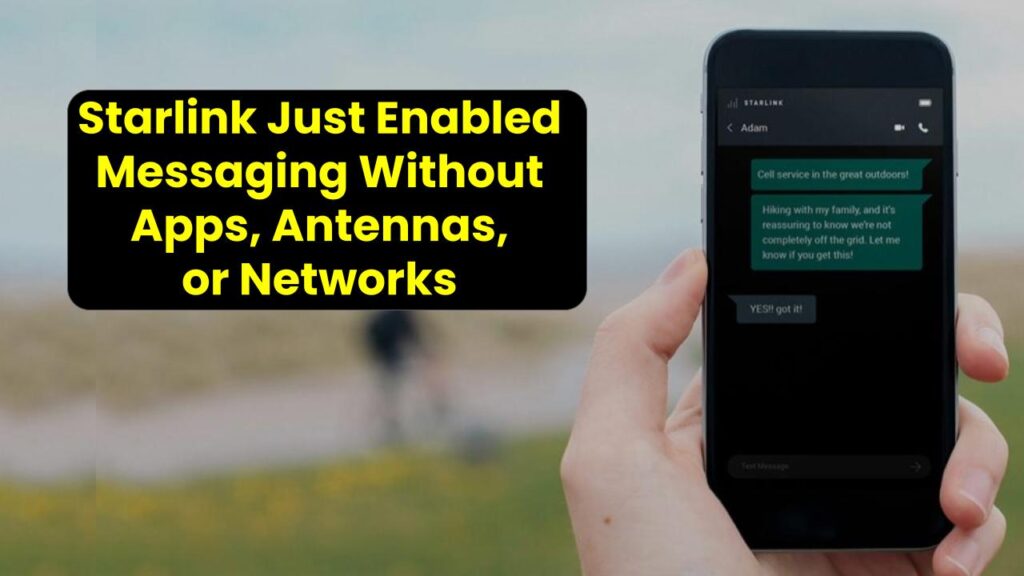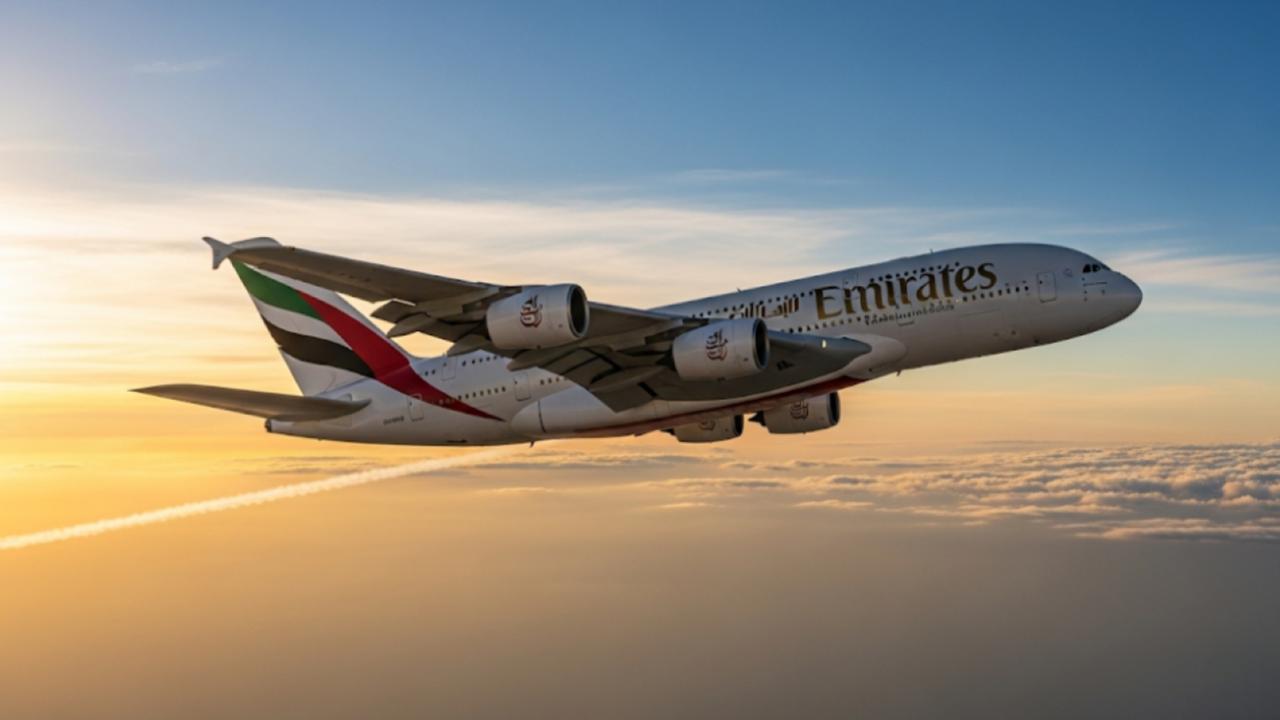In July 2025, Starlink and T-Mobile dropped a game-changer: Direct-to-Cell messaging that works without apps, antennas, or traditional cell networks. Yup, you heard that right. If you’re off the grid, in the boonies, or stuck in the middle of nowhere with no bars—you can now still send a text. Welcome to the future of wireless.

This revolutionary service, dubbed T-Satellite, connects ordinary smartphones directly to Starlink’s low-Earth-orbit satellites. And no, you don’t need a special phone, an app download, or one of those clunky external antennas. As long as you’ve got a compatible phone and a view of the sky, you’re golden.
Starlink Just Enabled Messaging Without Apps, Antennas, or Networks
| Feature | Details |
|---|---|
| Service Launch | July 23, 2025 |
| Provider | T-Mobile & Starlink (SpaceX) |
| Coverage | Continental U.S., Hawaii, Alaska (South), Puerto Rico |
| Phone Requirements | Over 60 models, including iPhone 13+, Galaxy S21+, Pixel 9+, Motorola Razr 2024 |
| No App/Accessory Needed | Yes – Uses existing internal radios |
| Supported Services | SMS, MMS (on Android), short audio, location sharing, 911 texts |
| Expansion Plans | Satellite data (Oct 2025), voice support, global roaming |
| Official Website | T-Mobile Satellite Coverage |
Starlink Direct-to-Cell is a giant leap toward making “no signal” a thing of the past. Whether you’re hiking the Rockies, camping in a national park, or just driving cross-country, you can now send a message without worrying about coverage. It’s affordable, accessible, and downright revolutionary.
As more features roll out—like app data and voice—this technology will only get better. The bottom line? Starlink and T-Mobile just made staying connected way easier, and you don’t have to be a techie to use it.
What Is Starlink Direct-to-Cell Messaging?
Let’s break it down. Normally, your phone talks to cell towers. No towers? No signal. But what if those towers were in space?
That’s the whole idea behind Direct-to-Cell. Starlink’s satellites are now equipped to act like floating cell towers. They beam signals directly to your phone, using T-Mobile’s licensed spectrum. It’s like having a mini base station flying overhead every few minutes.
Who Can Use It?
Right now, T-Mobile customers on qualifying plans get the service included at no extra cost. If you’re on another carrier (Verizon, AT&T), you can subscribe separately for around $10/month (intro price).
Compatible phones include:
- Apple iPhone 13 and newer
- Samsung Galaxy S21–S25
- Google Pixel 9+
- Motorola Razr (2024)
Tip: Check if your plan includes “T-Satellite” or “Experience Beyond.” If not, contact your carrier or visit T-Mobile’s Satellite Support.
How Does It Work?
Step-by-Step Breakdown
- You’re out of range: No towers? No bars? No worries.
- Your phone auto-switches: Instead of a “No Signal” warning, it shows “T-Mobile SpaceX” or “SAT”.
- Send your message: It goes up to a satellite like a digital carrier pigeon.
- Delivery: The satellite beams it to the nearest working ground station or user.
It’s that simple. The only requirement? A clear view of the sky.
What’s Supported (Right Now)
- Text messages (SMS)
- Multimedia messages (MMS) on most Android phones
- Short voice notes
- Location sharing
- Text-to-911
Coming later in 2025:
- Low-bandwidth app support (e.g., WhatsApp, AccuWeather, Waze)
- Satellite VoIP calls
- iOS MMS support
Why It Matters: Real-World Benefits
1. Safety in Emergencies
If you hike, travel backroads, or live rurally, this is a lifesaver. Literally. No cell service? You can still contact 911 or loved ones.
2. Peace of Mind
Worried about losing contact with kids or parents during a storm or blackout? Direct-to-Cell has your back.
3. Affordable Accessibility
No need to splurge on pricey satellite phones like Garmin inReach or Iridium. This is built-in to many phones you already own.
4. Game Changer for Professionals
From field techs and emergency responders to real estate pros and RV travelers—anyone who ventures outside reliable cell coverage now has a solid fallback.
Real Data and Stats
- 2,000+ Starlink satellites are already in orbit, with thousands more planned.
- T-Mobile estimates 90% of U.S. dead zones are now covered.
- Over 100 million U.S. phones are compatible by end of 2025.
- The satellite delay is just 1–60 seconds on average for texts.
Practical Advice for Getting Started
Check Compatibility
- Go to your phone’s settings > About Phone
- Match it against T-Mobile’s list of supported devices
Choose the Right Plan
- If you’re a T-Mobile customer, make sure you’re on Go5G Next, Magenta MAX, or Experience Beyond.
Test in a Clear Area
- Go hiking or drive outside city limits.
- Disable WiFi and mobile data, then try sending a text to someone.
- If it says “T-Mobile SpaceX” or “SAT,” you’re in!
FAQs
Can I use Direct-to-Cell overseas?
Not yet. International roaming and partnerships are in the works, but for now, this service is U.S. only.
Does it drain my battery?
No more than normal texting. In fact, it uses less power than cellular data.
Can I browse the web or use Instagram?
Not yet. App data support (very limited) is expected starting October 2025.
Will Apple add native support?
Apple’s working on satellite tech, but for now, MMS support is limited to Android. That said, emergency SOS is already available for iPhone 14+.
How often do satellites pass overhead?
Roughly every 5–10 minutes. So if you miss one, another’s on the way.








